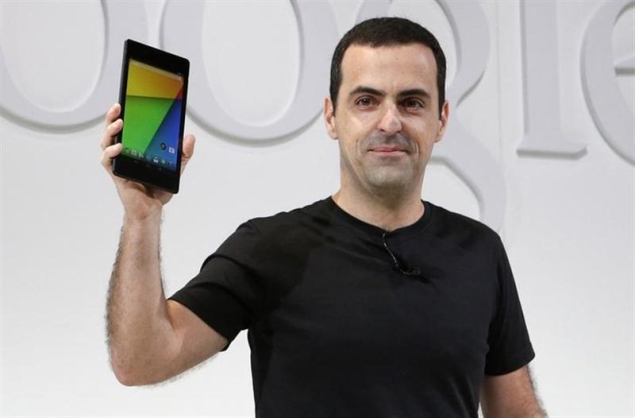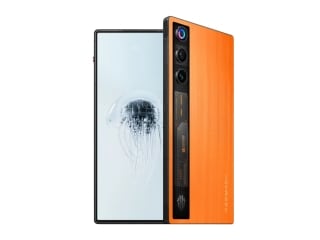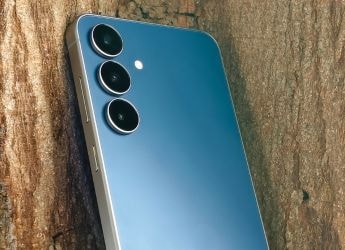- Home
- Tablets
- Tablets Reviews
- New Google Nexus 7 is good value even with higher price
New Google Nexus 7 is good value even with higher price

The new tablet comes with a $30 price increase over last year's model. At $229 for the base model, it is still a bargain - and 30 percent cheaper than Apple's $329 iPad Mini. The display is sharper and the sound is richer than the old model. There's now a rear camera for taking snapshots. The new Nexus 7 is the first device to ship with Android 4.3, which lets you create profiles to limit what your kids can do on your tablet when you're not around.
Amazon.com Inc.'s $199 Kindle Fire HD is cheaper, but it doesn't give you full access to the growing library of Android apps for playing games, checking the weather, tracking flights, reading the news and more. The Nexus 7 does.
It's a fine complement to your smartphone if it's running Google's Android, the dominant operating system on phones these days - even as Apple commands the market for tablet computers with its full-size iPad and iPad Mini. Unless you tell it not to, apps you use on the phone will automatically appear on the Nexus 7, so you can switch from device to device seamlessly. When you are signed in, bookmarks will also transfer over Google's Chrome Web browser, as will favorite places on Google Maps.
If you were already looking at last year's Nexus 7 model, then go ahead and pay $30 more for the latest.
Although screen dimensions are identical, the new Nexus 7 has a higher pixel density, at 323 pixels per inch compared with 216 on the old model.
Sound is much better with speakers on the left and the right side of the tablet, held horizontally. Although they are technically back facing, the speakers are placed along a curved edge in such a way that sound seems to project outward and not away from you.
The new Nexus 7 also feels more comfortable. It's 17 percent thinner and 5 percent narrower. The old model was a tad too wide to grip comfortably.
The new Nexus ships with a camera app, something last year's model didn't really need because it had only a front-facing camera, for videoconferencing. With the new rear, 5-megapixel camera, you can take photos and video of what's in front of you.
As for the restricted profiles that come with Android 4.3, it's a good idea, though it still has kinks. When you set up a profile for your kid, you pick which apps to enable. Don't want your kid to be surfing the Web unrestricted? Then keep the Chrome browser disabled. Don't want him or her on Facebook? Keep that app disabled, too. The app store is also disabled. If you do allow access to a particular app, though, then it's full access. There's no filtering to block porn and other questionable material, for instance.
And although the new tablet is the first to ship with Android 4.3, it's available to download on other devices, including last year's Nexus 7.
What the new tablet does offer is the promise of a longer battery life - up to 10 hours for Web surfing and nine hours for video streaming. Last year's model was rated at eight hours.
There's no question the new model is better and worth the price increase.
Choosing between the new Nexus 7 and the iPad Mini is tougher.
If you already have an iPhone, the iPad Mini will be a nice complement. You won't have to buy music, video and apps twice, for instance. You might want to wait until this fall, though, to see whether Apple comes out with a new model.
It's a tougher call if you have an Android phone.
By volume, the two systems have a comparable number of apps. But I've found that many larger app developers have made versions only for the iPhone and the iPad.
Android is good in that many apps designed for a phone's smaller screen are automatically adapted to take advantage of a tablet's larger screen. On the iPad, apps that aren't optimized for it are squeezed into a smaller window the size of an iPhone. Blow it up to full screen, and it looks distorted. But that's not as glaring on the Mini as it is on the full-size iPad. And having apps automatically change their layout isn't the same as designing them for the tablet from scratch, as is the case with the hundreds of thousands of apps optimized for the iPad.
The Nexus 7's screen is much sharper than that on the iPad Mini, which has the non-HD display technology of the iPad 2 from 2011 - ancient in the world of mobile gadgets. The Nexus 7 is also a tad lighter, by 6 percent.
That said, the iPad Mini has a larger screen, measuring 7.9 inches diagonally compared with 7 inches on the Nexus. And the iPad Mini has had a rear camera from the start. The iPad Mini also has Siri, a voice assistant that is feistier than Google Now on the Nexus. If you prefer Google Now for its ability to give you information you need to know without even asking, you can download it on the Mini. You can't get Siri on the Nexus.
If you do get the Nexus 7, it supports wireless charging, so you can get rid of the messy wiring. The device comes only with a standard microUSB charger to plug in, so you'll have to buy a Qi-compatible wireless charger yourself.
The $229 base model comes with 16 gigabytes of storage. For $40 more, or $269, you get twice the storage. Both will go on sale in the U.S. next Tuesday. A 32-gigabyte model with 4G cellular capability will cost $349. By contrast, the iPad Mini starts at $329. A 32-gigabyte version with 4G costs $559.
Even with the price increase, Google has Apple beaten on price. The Nexus 7 may lack the cachet and many of the apps that the iPad Mini has, but you'll be able to do a lot with it. I hope technology companies won't make price hikes a habit, but this one is made palatable by the device's richer display, sound and camera.
Get your daily dose of tech news, reviews, and insights, in under 80 characters on Gadgets 360 Turbo. Connect with fellow tech lovers on our Forum. Follow us on X, Facebook, WhatsApp, Threads and Google News for instant updates. Catch all the action on our YouTube channel.
Related Stories
- Samsung Galaxy Unpacked 2025
- ChatGPT
- Redmi Note 14 Pro+
- iPhone 16
- Apple Vision Pro
- Oneplus 12
- OnePlus Nord CE 3 Lite 5G
- iPhone 13
- Xiaomi 14 Pro
- Oppo Find N3
- Tecno Spark Go (2023)
- Realme V30
- Best Phones Under 25000
- Samsung Galaxy S24 Series
- Cryptocurrency
- iQoo 12
- Samsung Galaxy S24 Ultra
- Giottus
- Samsung Galaxy Z Flip 5
- Apple 'Scary Fast'
- Housefull 5
- GoPro Hero 12 Black Review
- Invincible Season 2
- JioGlass
- HD Ready TV
- Laptop Under 50000
- Smartwatch Under 10000
- Latest Mobile Phones
- Compare Phones
- Huawei Nova 15
- Huawei Nova 15 Pro
- Huawei Nova 15 Ultra
- OnePlus 15R
- Realme Narzo 90x 5G
- Realme Narzo 90 5G
- Vivo S50 Pro Mini
- Vivo S50
- Asus ProArt P16
- MacBook Pro 14-inch (M5, 2025)
- Huawei MatePad 11.5 (2026)
- OnePlus Pad Go 2 (5G)
- Huawei Watch 10th Anniversary Edition
- OnePlus Watch Lite
- Acerpure Nitro Z Series 100-inch QLED TV
- Samsung 43 Inch LED Ultra HD (4K) Smart TV (UA43UE81AFULXL)
- Asus ROG Ally
- Nintendo Switch Lite
- Haier 1.6 Ton 5 Star Inverter Split AC (HSU19G-MZAID5BN-INV)
- Haier 1.6 Ton 5 Star Inverter Split AC (HSU19G-MZAIM5BN-INV)

















